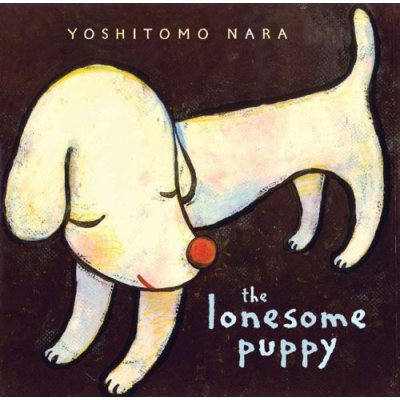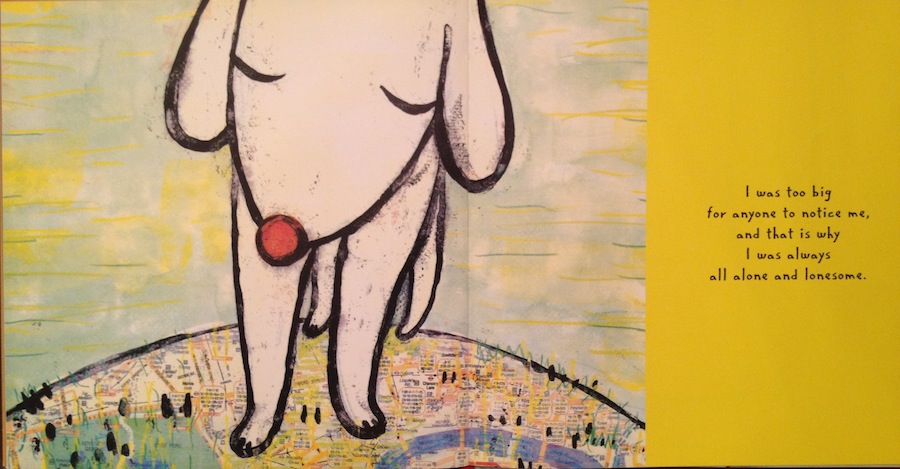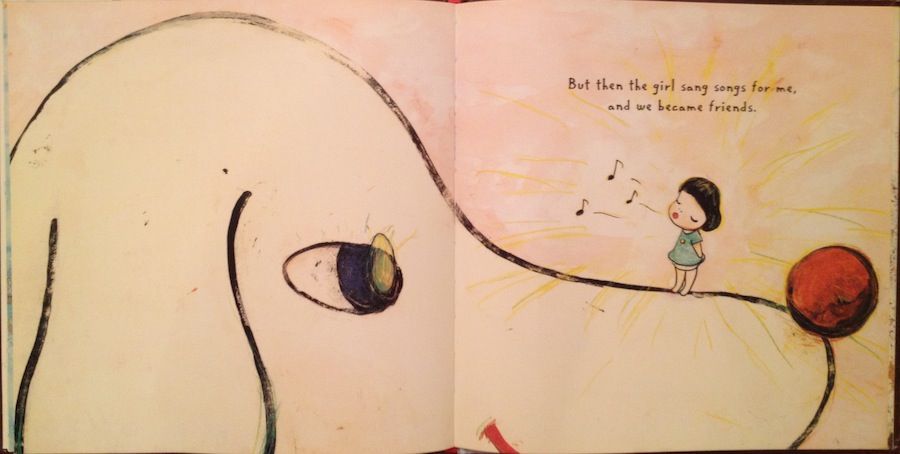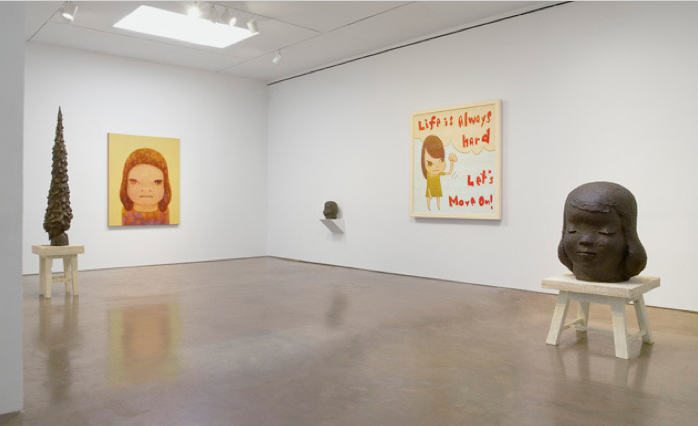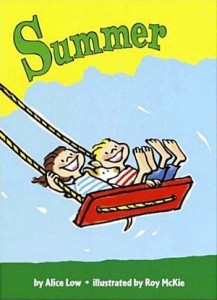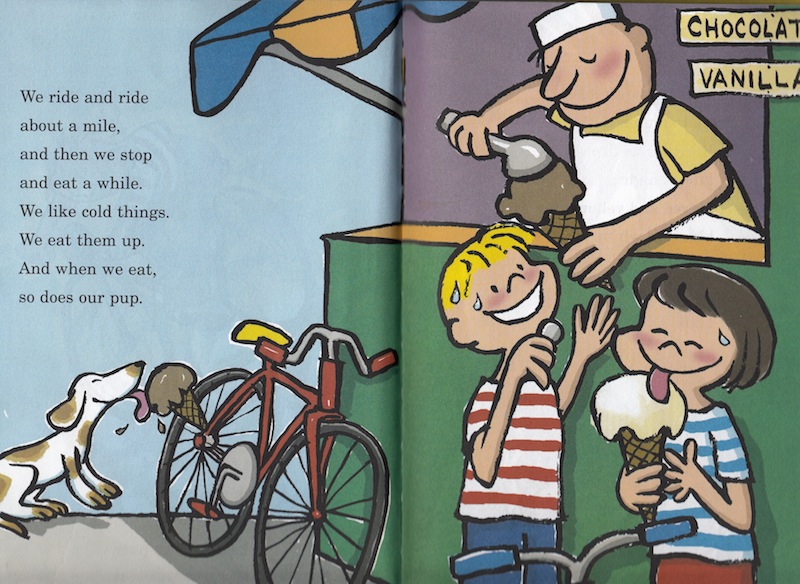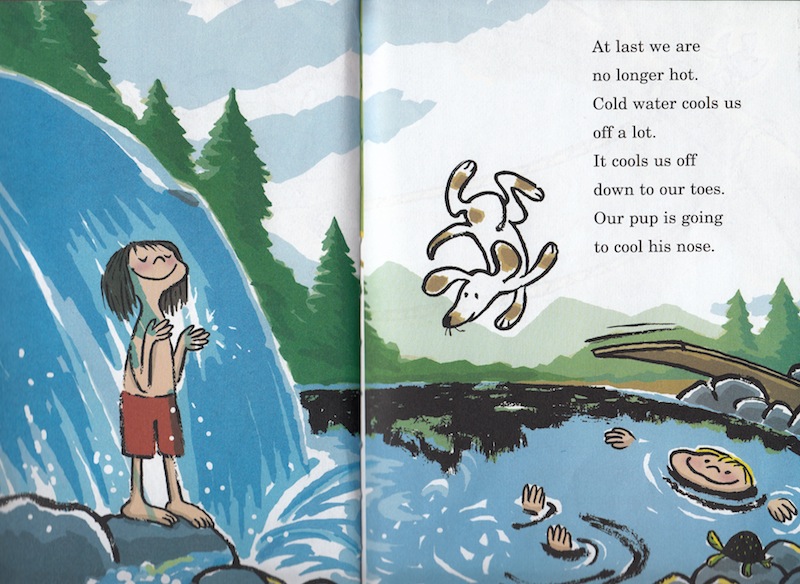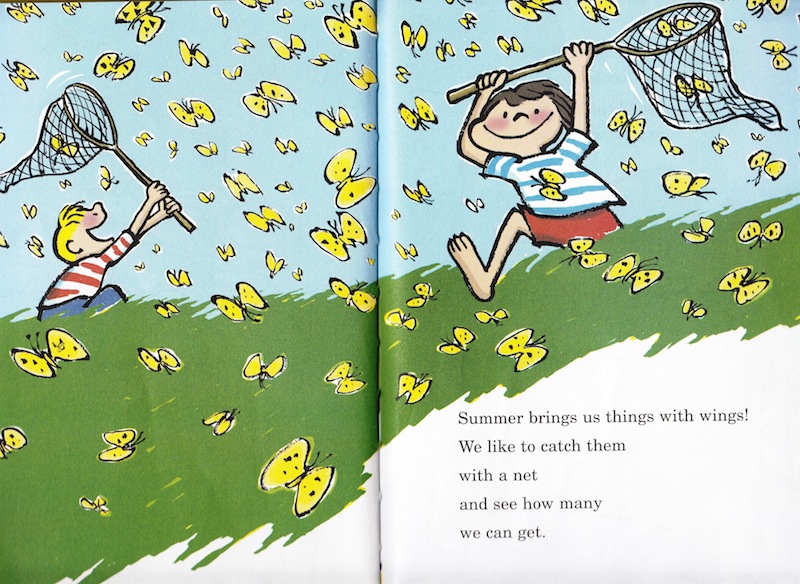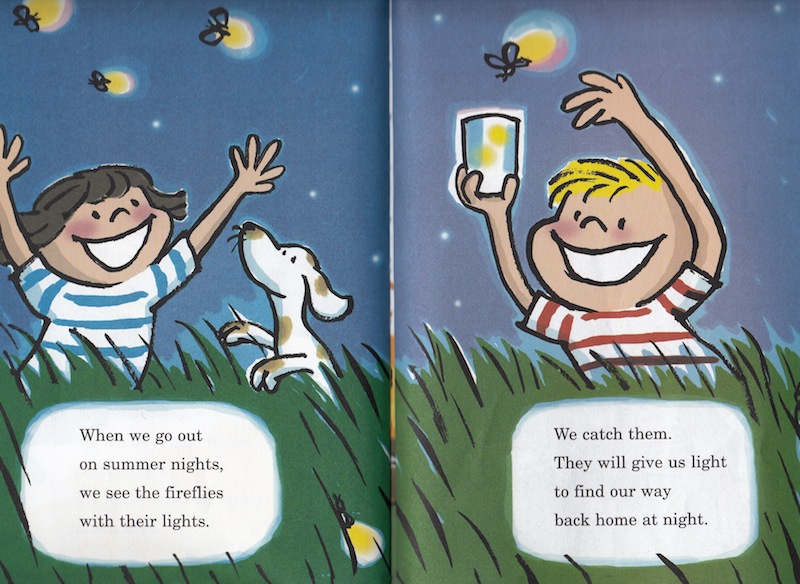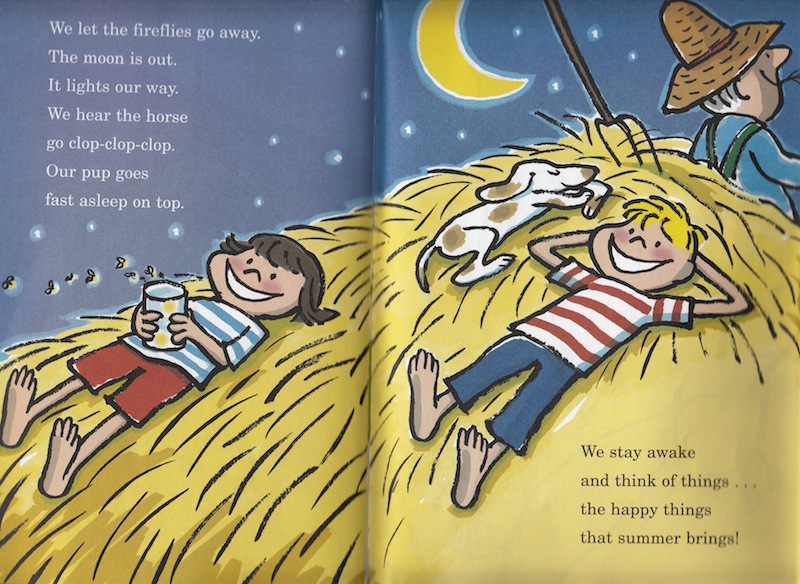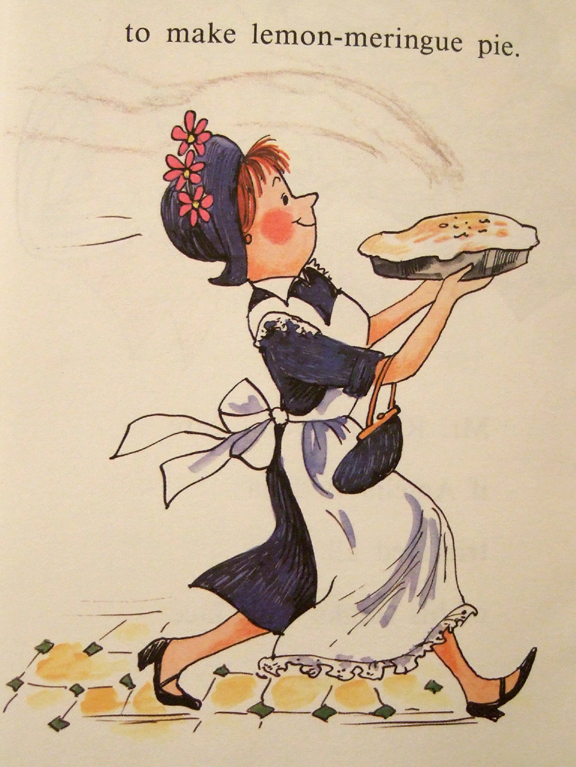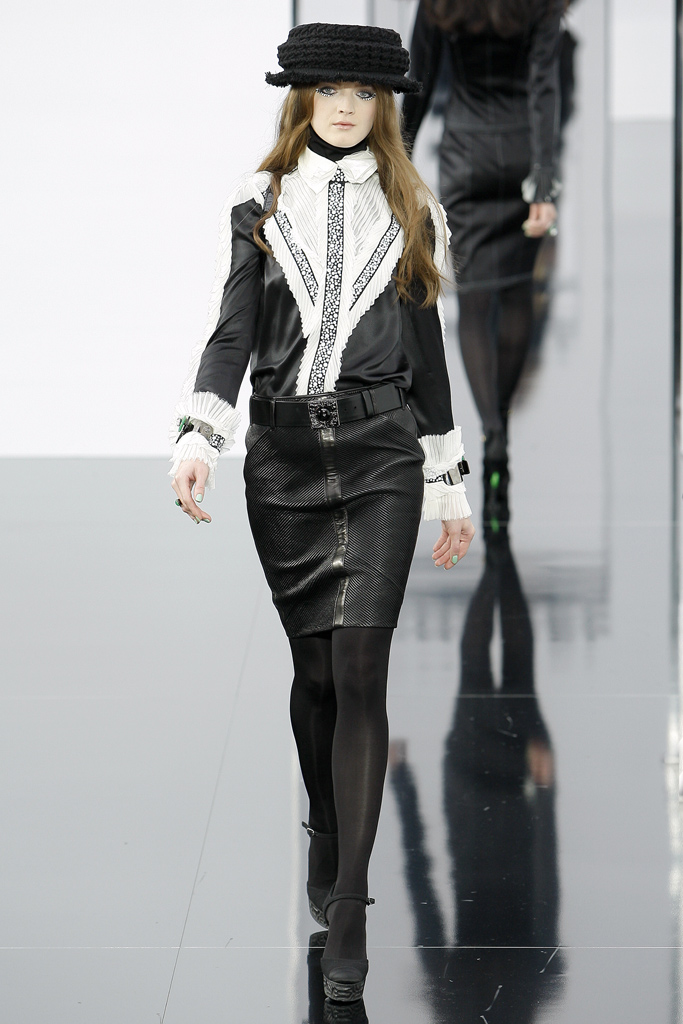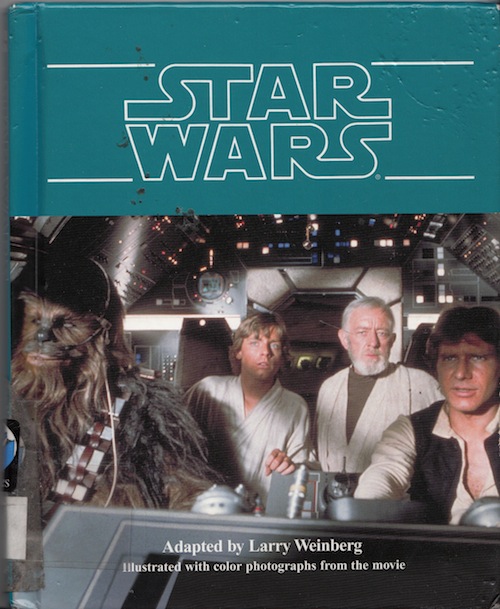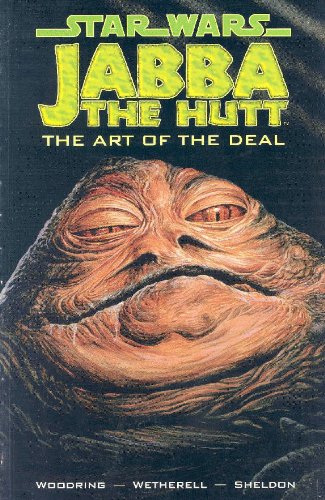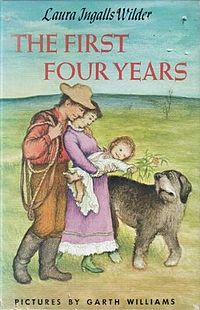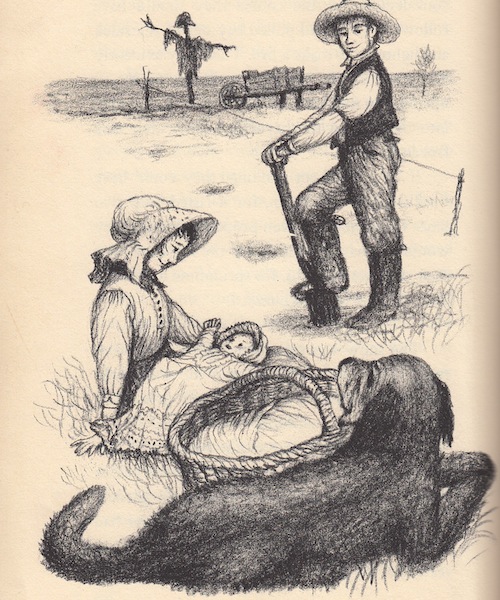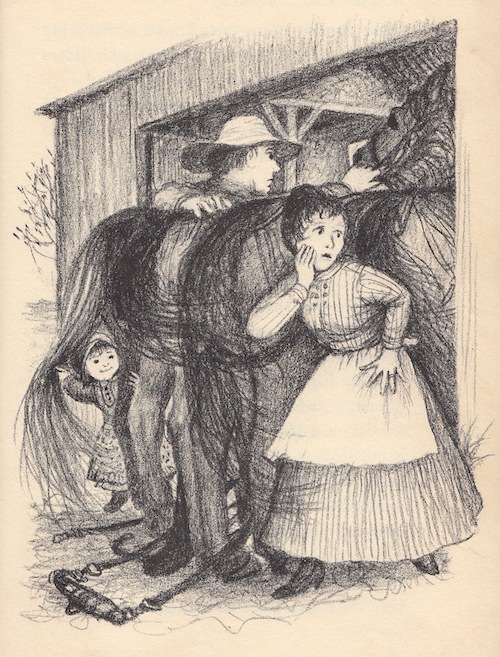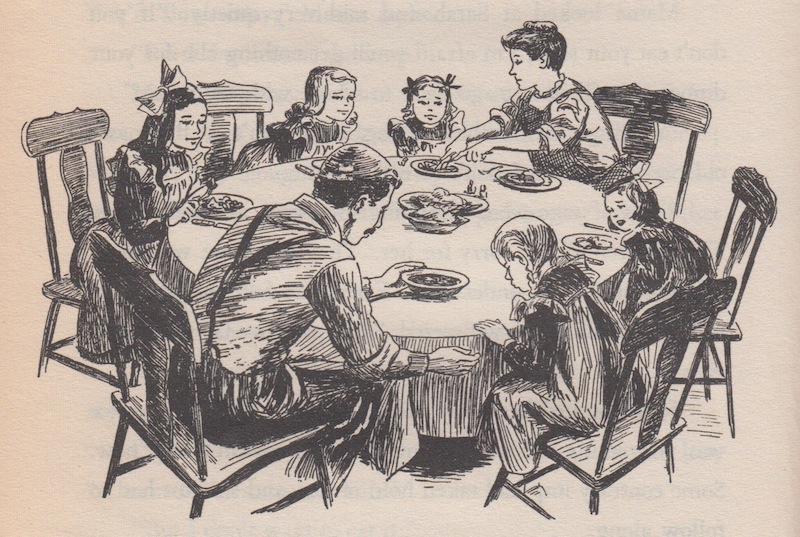
All-of-a-Kind Family did for Jewish-American cuisine what the Little House books did for pioneer cooking.
I grew up in a household where we didn’t give food much thought. We didn’t make pilgrimages to particular restaurants or rhapsodize about long-deceased relatives’ signature dishes. I don’t have aromatic memories of cozy cooking lessons with my mother, peppered with life advice. For my parents, practical-minded immigrants from Korea, the purpose of food was wholly unromantic: you ate so you wouldn’t be hungry.
The idea that food was more than something to fill your stomach came to me through books. There would be a moment in a novel where the characters ate some exotic (or exotic to me, at least), delicious-sounding morsel and I’d become entranced. I’m not just talking about the roasted pig’s tail and the green pumpkin pie from the Little House books. Or the cold meat pie from Danny the Champion of the World. Those books were just the start.
1) The mulligan stew from The Boxcar Children
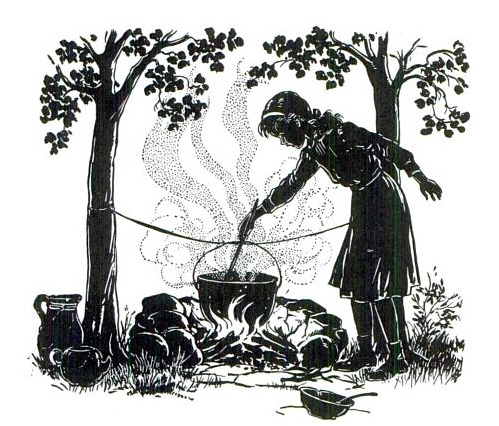 When we first meet the plucky orphans, all they have to eat are a couple of loaves of bread. But as their fortunes improve, they go from eating just bread, to bread and milk, to bread, milk, “fine yellow cheese” and wild blueberries. Each humble new addition to their pantry is an occasion for celebration. And when scrappy 12-year-old chef Jessie manages to cook a stew from some scrounged up carrots, onions and turnips and a piece of dried meat, it signifies that the boxcar has become a true home.
When we first meet the plucky orphans, all they have to eat are a couple of loaves of bread. But as their fortunes improve, they go from eating just bread, to bread and milk, to bread, milk, “fine yellow cheese” and wild blueberries. Each humble new addition to their pantry is an occasion for celebration. And when scrappy 12-year-old chef Jessie manages to cook a stew from some scrounged up carrots, onions and turnips and a piece of dried meat, it signifies that the boxcar has become a true home.
Jessie cut the tops off the vegetables and washed them in the brook. “I’ll put them in after the meat has cooked awhile,” she said. Soon the water began to boil, and the stew began to smell good. Watch sat down and looked at it. He sniffed hungrily at it and barked and barked. The children sat around the fireplace, eating bread and milk. Now and then Jessie stirred the stew with a big spoon. “It will make a good meal,” said Henry.
2) The goat’s milk cheese in Heidi
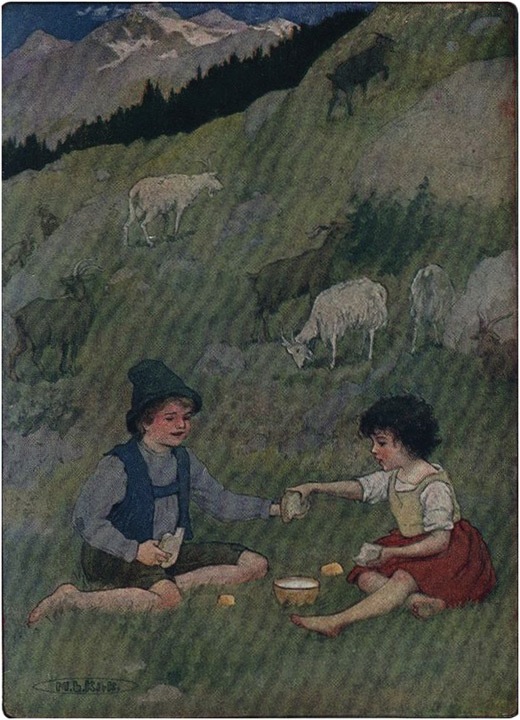 These days a lot of people will tell you that that dairy (like wheat) is the devil. But Heidi seems awfully healthy. The only food her iracible, goat-herding grandfather seems to feed her is bread with toasted cheese, but it’s magical stuff.
These days a lot of people will tell you that that dairy (like wheat) is the devil. But Heidi seems awfully healthy. The only food her iracible, goat-herding grandfather seems to feed her is bread with toasted cheese, but it’s magical stuff.
As the pot began to sing, he put a large piece of cheese on a toasting fork and moved it to and fro in front of the fire until it became golden yellow all over. She ate her bread and cheese, which tasted delicious, and every now and then she took a drink. She looked as happy and contented as anyone could be.
And the bubbly, fresh milk! Heidi declares it “the best milk I’ve ever drunk” and guzzles it by the mugful. (It’s always a mug, never a glass.)
Clara had never tasted goat’s milk, and she sniffed at it uncertainly, but when she saw how quickly Heidi was emptying her mug, she began to drink too, and thought the milk tasted as sweet and spicy as if it had sugar and cinnamon in it. “Tomorrow we shall drink two mugfuls,” said Uncle Alp.
Toward the end of the book, the clean mountain air and all-dairy diet even cures Heidi’s sickly city friend, Clara.
3) The roasted chickpeas in All-of-a-Kind Family
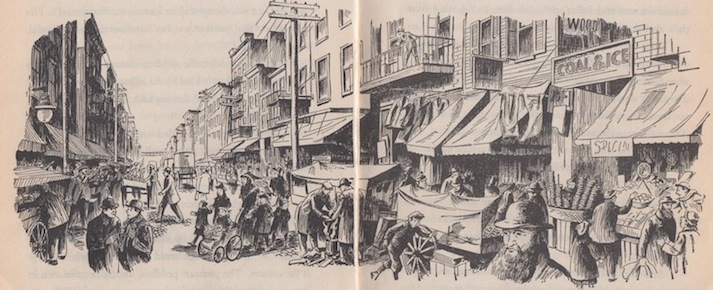 To this day anything I know about gefilte fish, hamentashen or teiglach I learned not from my Jewish in-laws but from author Sydney Taylor. It’s hard to choose just one food moment from this series, as all five of the All-of-a-Kind Family books are filled with mouthwatering descriptions of meals. But the first book has a vivid chapter where Mama takes the girls food shopping at the Rivington Street market. The road is choked with pushcart peddlers and “the delicious odor of sour pickles mingled with the smell of sauerkraut and pickled tomatoes and watermelon rind.” Each girl gets to spend a penny on a treat; Sarah chooses the roasted chickpeas:
To this day anything I know about gefilte fish, hamentashen or teiglach I learned not from my Jewish in-laws but from author Sydney Taylor. It’s hard to choose just one food moment from this series, as all five of the All-of-a-Kind Family books are filled with mouthwatering descriptions of meals. But the first book has a vivid chapter where Mama takes the girls food shopping at the Rivington Street market. The road is choked with pushcart peddlers and “the delicious odor of sour pickles mingled with the smell of sauerkraut and pickled tomatoes and watermelon rind.” Each girl gets to spend a penny on a treat; Sarah chooses the roasted chickpeas:
Everyone watched as he fished out the peas. First he took a small square of white paper from a little compartment on one side of the oven. He twirled the paper about his fingers to form the shape of a cone and then skillfully twisted the pointed end so that the container would not fall apart. He lifted the wagon cover on one side revealing a large white enamel pot. The steam from the pot blew its hot breath in the little girls’ faces so they stepped back a bit while the peas were ladled out with a big soup spoon. The wagon cover was dropped back into place and the paper cup handed over to Sarah. The peas were spicy with pepper and salt, and how good they were!
When I first read this, I didn’t have the faintest idea what a chickpea even was. But I was mesmerized.
4) The toasted bread with butter and sugar in The Great Brain
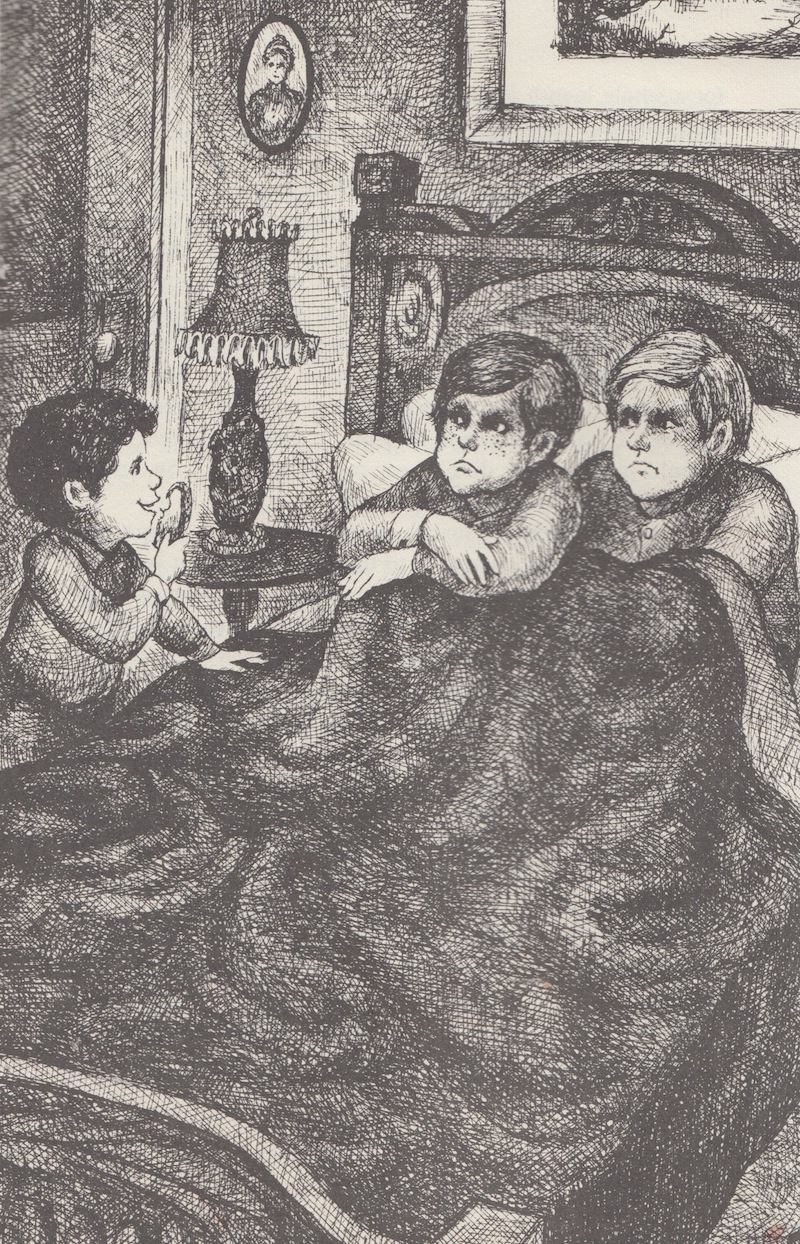 My brother and I were obsessed with The Great Brain series, which was set in a small town in Utah in the 1890s. All that mysterious tension between the Gentiles vs the Mormons and the boys constantly telling each other “I’ll whip you good!” (these kids were always beating each other to a pulp) was utterly fascinating. I was also struck by how simple yet delicious all the food always sounded. Mamma was always cooking and baking, and the three boys were constantly “gorging themselves” on fried chicken, roast beef sandwiches, hard-boiled eggs, and pie. But this description of the toasted bread, butter and sugar was the ultimate:
My brother and I were obsessed with The Great Brain series, which was set in a small town in Utah in the 1890s. All that mysterious tension between the Gentiles vs the Mormons and the boys constantly telling each other “I’ll whip you good!” (these kids were always beating each other to a pulp) was utterly fascinating. I was also struck by how simple yet delicious all the food always sounded. Mamma was always cooking and baking, and the three boys were constantly “gorging themselves” on fried chicken, roast beef sandwiches, hard-boiled eggs, and pie. But this description of the toasted bread, butter and sugar was the ultimate:
Mamma made fresh bread that day. If there was anything my two brothers liked the most, it was to take the heel of a fresh-baked loaf of bread, smother it with butter and sugar, and then put it in the oven until the sugar turned brown. It was better than candy. I entered the bedroom with a heel of bread covered with butter and toasted sugar.
“I thought I’d have a little snack before going out to play,” I said as I waved the heel of bread back and forth so they could smell it. Then I took a bite out of it. “Boy is this delicious. Don’t you wish you could have a bite?”
My brother and I would often try to replicate this treat using a heel of store-bought “French Bread” from the supermarket, but it never came out the way we imagined it should.
5) The beaver family’s fish dinner in The Lion, the Witch and the Wardrobe
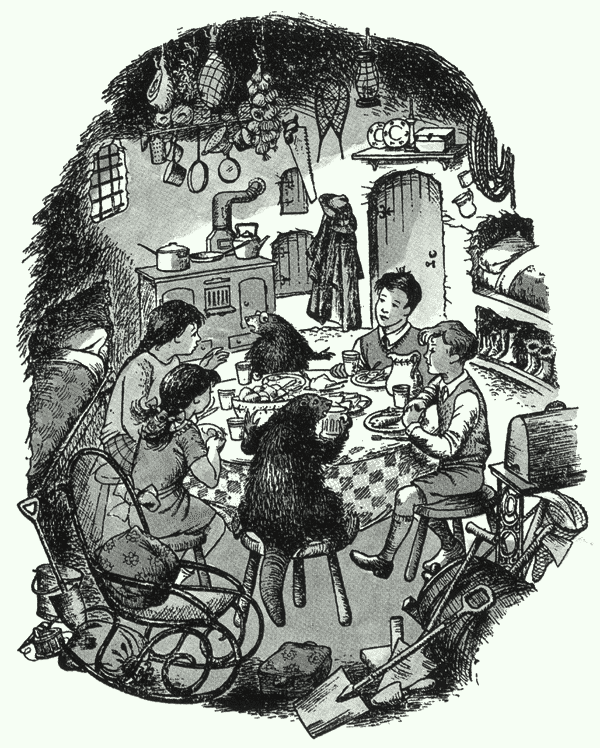 That enchanted Turkish Delight (“each piece was sweet and light to the very center and Edmund had never tasted anything more delicious”) is what sets the plot in action. But it’s the earthy, peasant-y feast of fresh trout and boiled potatoes served by the Beavers that is the book’s crowning food moment. Mr. Beaver cuts a hole in the ice, whisks out some still-wriggling trout, and then brings it inside to Mrs. Beaver:
That enchanted Turkish Delight (“each piece was sweet and light to the very center and Edmund had never tasted anything more delicious”) is what sets the plot in action. But it’s the earthy, peasant-y feast of fresh trout and boiled potatoes served by the Beavers that is the book’s crowning food moment. Mr. Beaver cuts a hole in the ice, whisks out some still-wriggling trout, and then brings it inside to Mrs. Beaver:
Just as the frying-pan was nicely hissing, Peter and Mr. Beaver came in with the fish which Mr. Beaver had already opened with his knife and cleaned out in the open air. You can think how good the new-caught fish smelled while they were frying and how the hungry children longed for them to be done and how very much hungrier still they had become before Mr. Beaver said, “Now we’re nearly ready.” Susan drained the potatoes and then put them all back in the empty pot to dry on the side of the range while Lucy was helping Mrs. Beaver to dish up the trout … There was a jug of creamy milk for the children (Mr. Beaver stuck to beer) and a great big lump of deep yellow butter in the middle of the table from which everyone took as much as he wanted to go with his potatoes, and all the children thought — and I agree with them — that there’s nothing to beat good freshwater fish if you eat it when it has been alive half an hour ago and has come out of the pan half a minute ago.”
Mind you, the meal concludes with a “gloriously sticky marmalade roll, steaming hot” and it’s all served up in a cozy beaver’s den where there are “hams and strings of onions hanging from the roof,” and strung along the walls are “gum boots and oilskins and hatchets, and pairs of shears and spades and trowels and things for carrying mortar in and fishing-rods and fishing-nets.” In short, it feels like the prototype for every Brooklyn restaurant serving farm-to-table food.
Dearest readers: What are some of your favorite references to food from children’s books? (Harriet the Spy’s tomato sandwiches and egg creams? Rat and Mole’s picnic in Wind in the Willows?) Click on “leave a reply” and share in the comments!
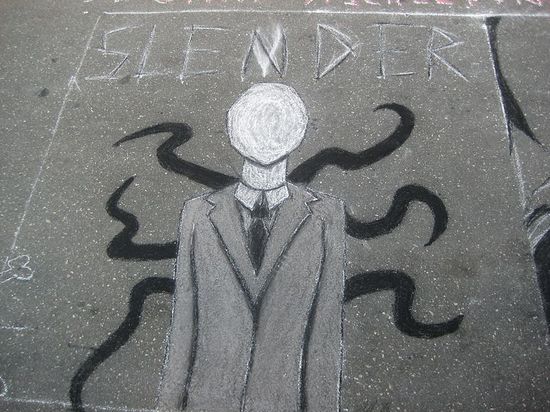 Like most people I know, the first time I ever heard of the internet meme Slender Man was a few weeks ago when the news story broke about the two 12-year-old girls in Wisconsin who stabbed their friend to please the fictional character. The demonic Slender Man is said to be tall, thin, faceless and dressed in a black suit. Artists have rendered him in many different ways.
Like most people I know, the first time I ever heard of the internet meme Slender Man was a few weeks ago when the news story broke about the two 12-year-old girls in Wisconsin who stabbed their friend to please the fictional character. The demonic Slender Man is said to be tall, thin, faceless and dressed in a black suit. Artists have rendered him in many different ways.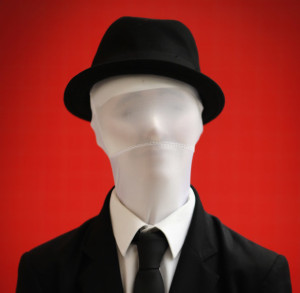
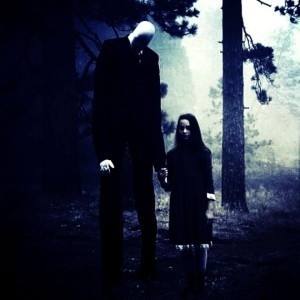 But today when I was looking through The Phantom Tollbooth, I was jolted by this. Remember him?
But today when I was looking through The Phantom Tollbooth, I was jolted by this. Remember him?
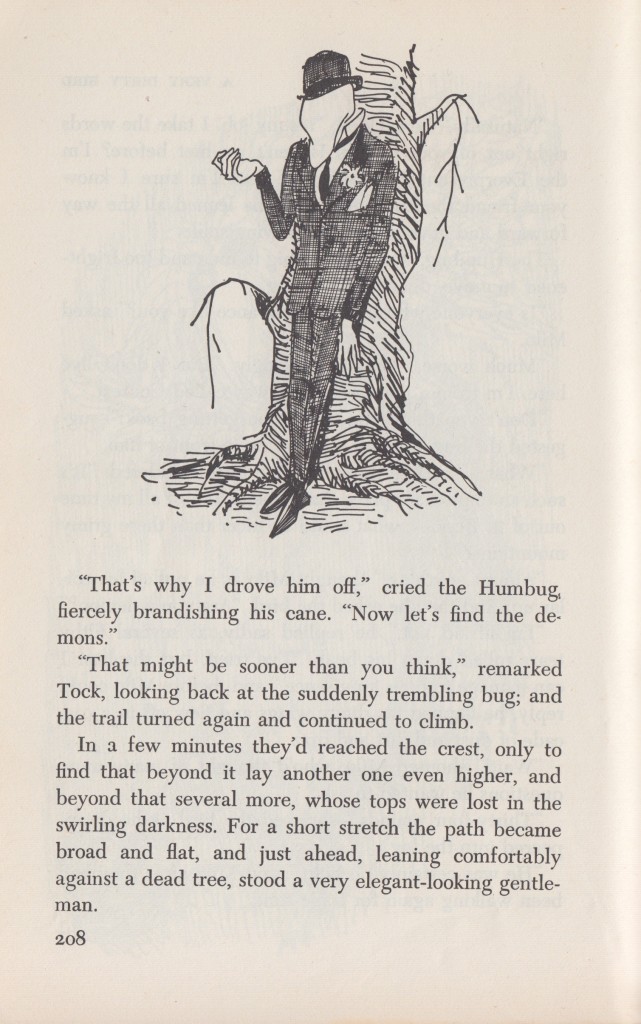

 When we first meet the plucky orphans, all they have to eat are a couple of loaves of bread. But as their fortunes improve, they go from eating just bread, to bread and milk, to bread, milk, “fine yellow cheese” and wild blueberries. Each humble new addition to their pantry is an occasion for celebration. And when scrappy 12-year-old chef Jessie manages to cook a stew from some scrounged up carrots, onions and turnips and a piece of dried meat, it signifies that the boxcar has become a true home.
When we first meet the plucky orphans, all they have to eat are a couple of loaves of bread. But as their fortunes improve, they go from eating just bread, to bread and milk, to bread, milk, “fine yellow cheese” and wild blueberries. Each humble new addition to their pantry is an occasion for celebration. And when scrappy 12-year-old chef Jessie manages to cook a stew from some scrounged up carrots, onions and turnips and a piece of dried meat, it signifies that the boxcar has become a true home. These days a lot of people will tell you that that dairy (like wheat) is the devil. But Heidi seems awfully healthy. The only food her iracible, goat-herding grandfather seems to feed her is bread with toasted cheese, but it’s magical stuff.
These days a lot of people will tell you that that dairy (like wheat) is the devil. But Heidi seems awfully healthy. The only food her iracible, goat-herding grandfather seems to feed her is bread with toasted cheese, but it’s magical stuff. To this day anything I know about gefilte fish, hamentashen or teiglach I learned not from my Jewish in-laws but from author Sydney Taylor. It’s hard to choose just one food moment from this series, as all five of the All-of-a-Kind Family books are filled with mouthwatering descriptions of meals. But the first book has a vivid chapter where Mama takes the girls food shopping at the Rivington Street market. The road is choked with pushcart peddlers and “the delicious odor of sour pickles mingled with the smell of sauerkraut and pickled tomatoes and watermelon rind.” Each girl gets to spend a penny on a treat; Sarah chooses the roasted chickpeas:
To this day anything I know about gefilte fish, hamentashen or teiglach I learned not from my Jewish in-laws but from author Sydney Taylor. It’s hard to choose just one food moment from this series, as all five of the All-of-a-Kind Family books are filled with mouthwatering descriptions of meals. But the first book has a vivid chapter where Mama takes the girls food shopping at the Rivington Street market. The road is choked with pushcart peddlers and “the delicious odor of sour pickles mingled with the smell of sauerkraut and pickled tomatoes and watermelon rind.” Each girl gets to spend a penny on a treat; Sarah chooses the roasted chickpeas: My brother and I were obsessed with The Great Brain series, which was set in a small town in Utah in the 1890s. All that mysterious tension between the Gentiles vs the Mormons and the boys constantly telling each other “I’ll whip you good!” (these kids were always beating each other to a pulp) was utterly fascinating. I was also struck by how simple yet delicious all the food always sounded. Mamma was always cooking and baking, and the three boys were constantly “gorging themselves” on fried chicken, roast beef sandwiches, hard-boiled eggs, and pie. But this description of the toasted bread, butter and sugar was the ultimate:
My brother and I were obsessed with The Great Brain series, which was set in a small town in Utah in the 1890s. All that mysterious tension between the Gentiles vs the Mormons and the boys constantly telling each other “I’ll whip you good!” (these kids were always beating each other to a pulp) was utterly fascinating. I was also struck by how simple yet delicious all the food always sounded. Mamma was always cooking and baking, and the three boys were constantly “gorging themselves” on fried chicken, roast beef sandwiches, hard-boiled eggs, and pie. But this description of the toasted bread, butter and sugar was the ultimate: That enchanted Turkish Delight (“each piece was sweet and light to the very center and Edmund had never tasted anything more delicious”) is what sets the plot in action. But it’s the earthy, peasant-y feast of fresh trout and boiled potatoes served by the Beavers that is the book’s crowning food moment. Mr. Beaver cuts a hole in the ice, whisks out some still-wriggling trout, and then brings it inside to Mrs. Beaver:
That enchanted Turkish Delight (“each piece was sweet and light to the very center and Edmund had never tasted anything more delicious”) is what sets the plot in action. But it’s the earthy, peasant-y feast of fresh trout and boiled potatoes served by the Beavers that is the book’s crowning food moment. Mr. Beaver cuts a hole in the ice, whisks out some still-wriggling trout, and then brings it inside to Mrs. Beaver:
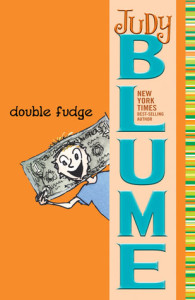
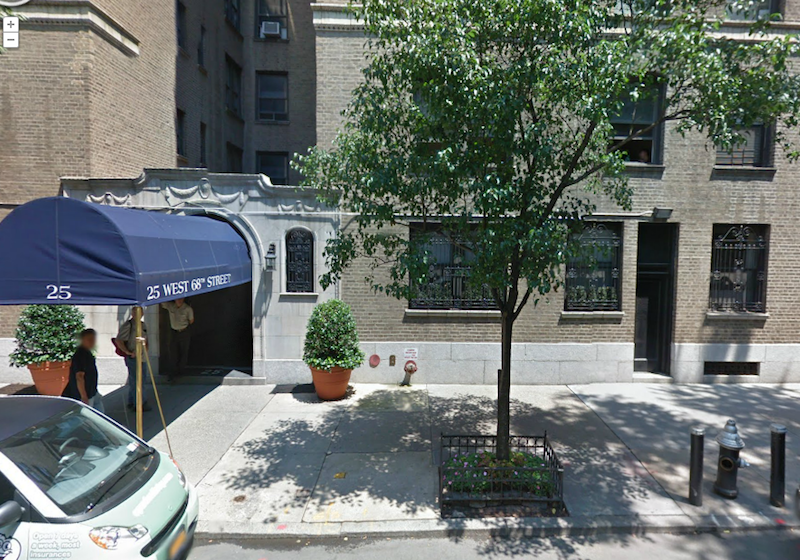
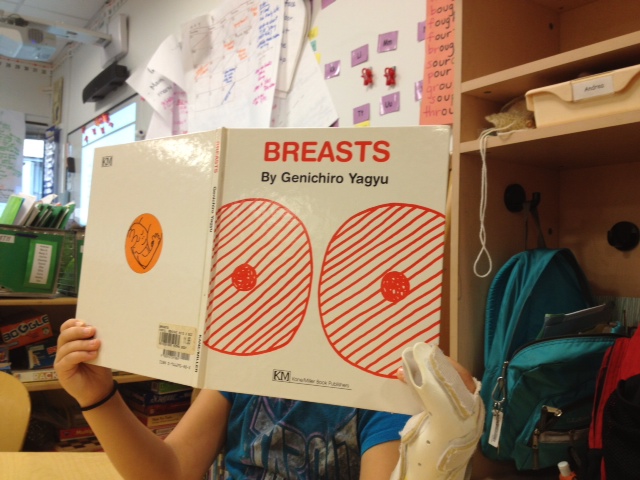 In my daughter’s third-grade class this spring, Friday mornings were devoted to the study of Human Growth and Development, a.k.a. sex ed. As a warm-up to each week’s discussion, her teachers would haul out a huge pile of books about sex and puberty — several of them with detailed anatomical drawings — and let the kids dive in during morning arrival. You have NEVER seen such focused eight and nine year olds; on these days, instead of idly chatting by their cubbies the kids would scramble into the meeting area and gather around the volumes like a pack of hungry animals. There they’d huddle in groups, goggle-eyed and totally silent save for the occasional chorus of “Gr-ooosss!” (And then we parents doing the drop-off would look at each other and mouth “Oh … my … god.”)
In my daughter’s third-grade class this spring, Friday mornings were devoted to the study of Human Growth and Development, a.k.a. sex ed. As a warm-up to each week’s discussion, her teachers would haul out a huge pile of books about sex and puberty — several of them with detailed anatomical drawings — and let the kids dive in during morning arrival. You have NEVER seen such focused eight and nine year olds; on these days, instead of idly chatting by their cubbies the kids would scramble into the meeting area and gather around the volumes like a pack of hungry animals. There they’d huddle in groups, goggle-eyed and totally silent save for the occasional chorus of “Gr-ooosss!” (And then we parents doing the drop-off would look at each other and mouth “Oh … my … god.”)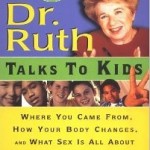 Instead of a typical textbook, the class used
Instead of a typical textbook, the class used 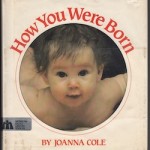
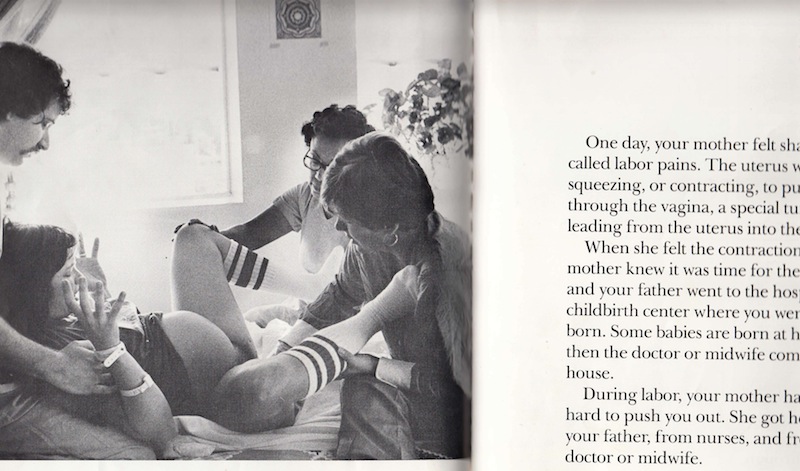
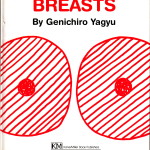 This book, translated from the Japanese, will remind you of those modern Japanese classics, Everyone Poops by Taro Gomi and The Gas We Pass by Shinta Cho (all part of the same series, My Body Science). Like those books, the illustrations here have a charming, primitive quality and the text — what little there is of it — doesn’t shy from a deadpan joke or two.
This book, translated from the Japanese, will remind you of those modern Japanese classics, Everyone Poops by Taro Gomi and The Gas We Pass by Shinta Cho (all part of the same series, My Body Science). Like those books, the illustrations here have a charming, primitive quality and the text — what little there is of it — doesn’t shy from a deadpan joke or two.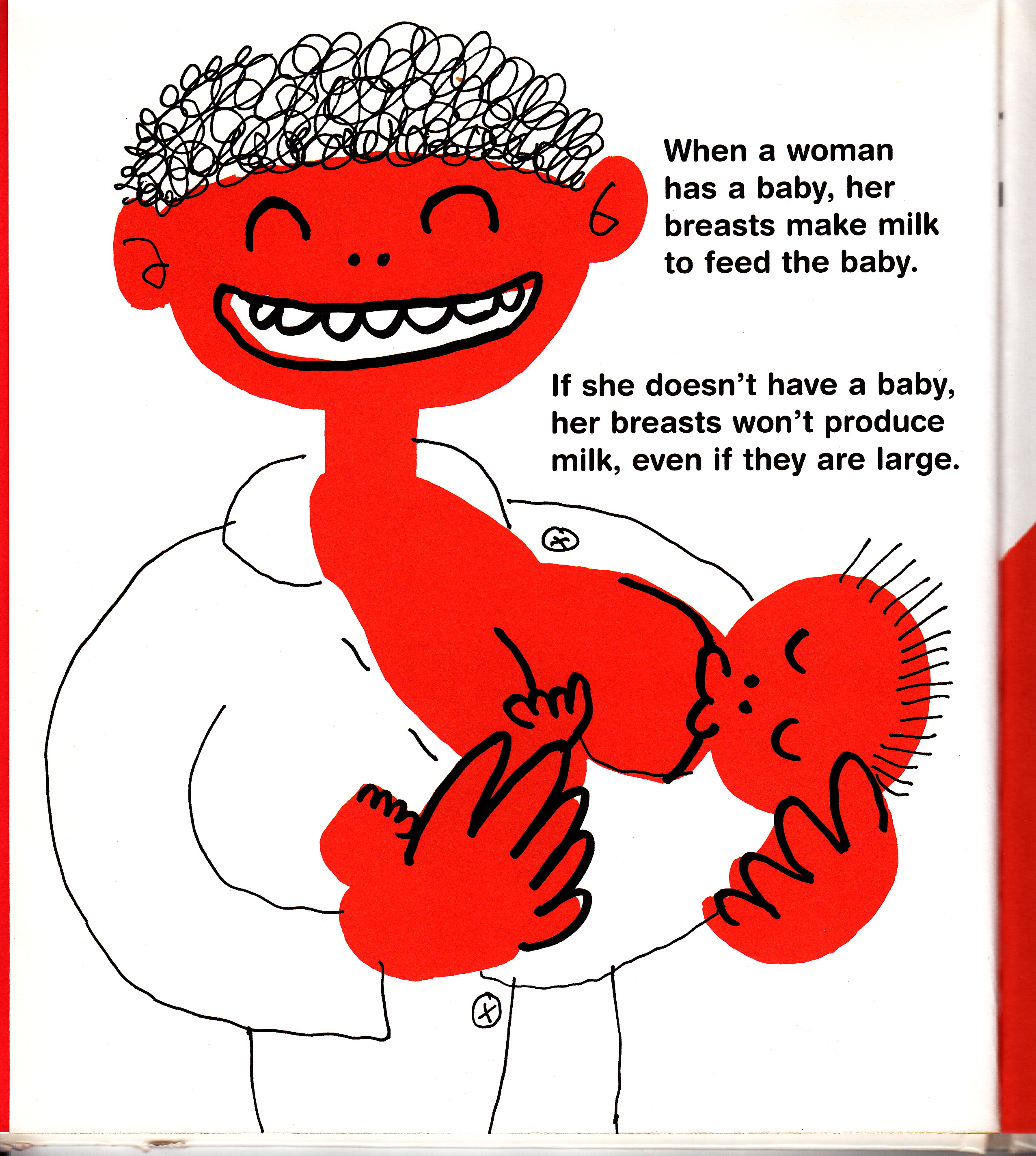
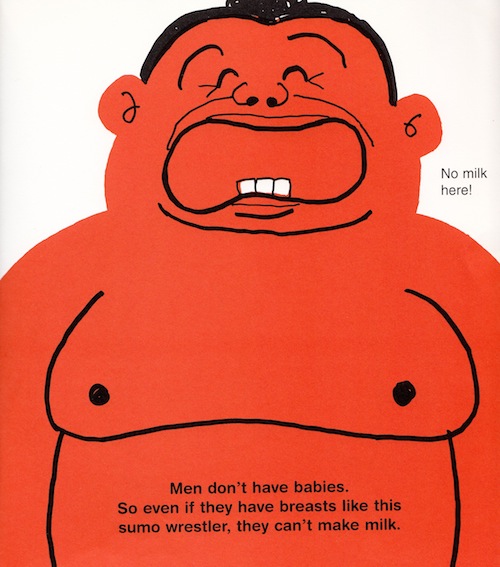
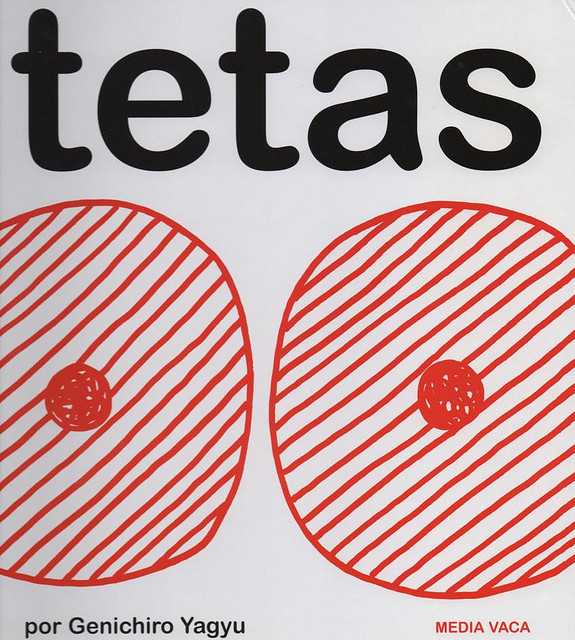
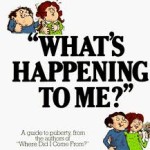 If I had grown up in a less Puritanical household, this is the book that I might have read as a kid growing up in the late 70s. It was evidently a huge hit when it came out, and it’s still in print (“over 1,000,000 copies sold!”). But I never laid eyes on it until this year, when a friend told me that he and his sister had loved it as kids. The illustrations have a very groovy Schoolhouse Rock vibe. The text is chatty and matter-of-fact (sex is compared to jumping rope; an orgasm is described as a sneeze). And I love the fact that it was written by Peter Mayle, he of the ubiquitous 90s novel, A Year in Provence.
If I had grown up in a less Puritanical household, this is the book that I might have read as a kid growing up in the late 70s. It was evidently a huge hit when it came out, and it’s still in print (“over 1,000,000 copies sold!”). But I never laid eyes on it until this year, when a friend told me that he and his sister had loved it as kids. The illustrations have a very groovy Schoolhouse Rock vibe. The text is chatty and matter-of-fact (sex is compared to jumping rope; an orgasm is described as a sneeze). And I love the fact that it was written by Peter Mayle, he of the ubiquitous 90s novel, A Year in Provence. 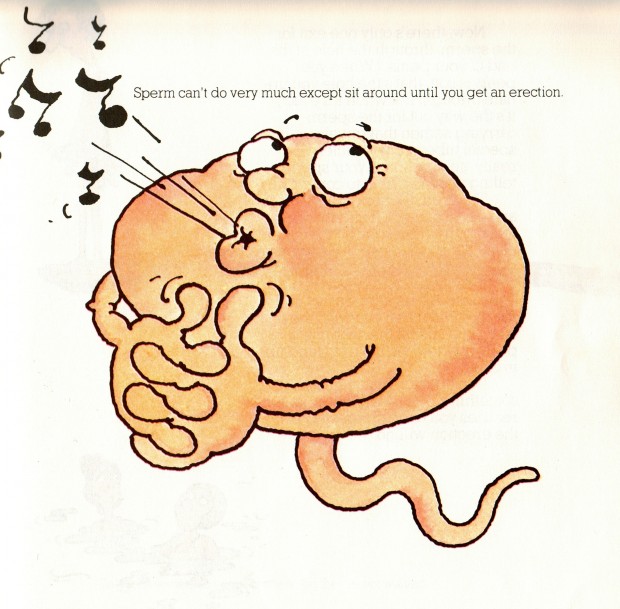
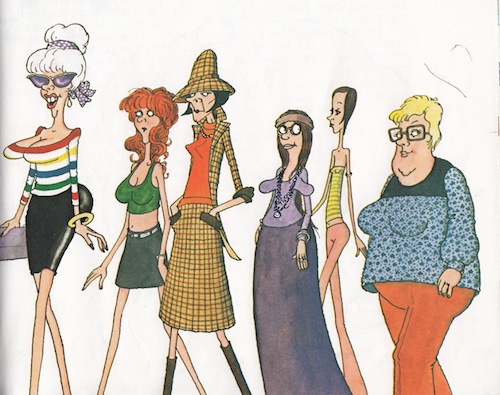 Fascinating. Boys’ wet dreams in the 70s starred the Breck shampoo girl!
Fascinating. Boys’ wet dreams in the 70s starred the Breck shampoo girl!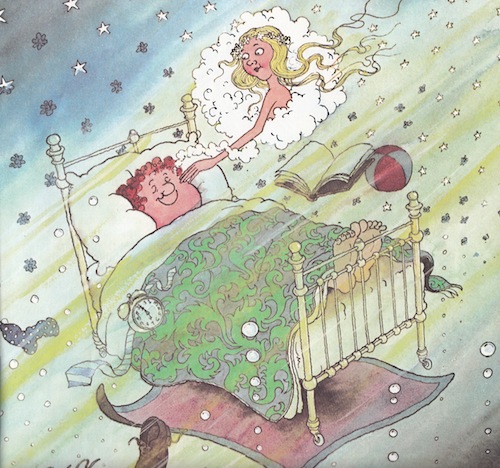
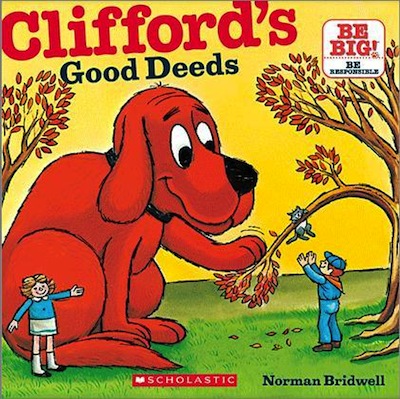 The Clifford the Big Red Dog books may be considered classics, but they’ve never done much for me. The plotlines tend toward the preachy, the illustrations are crude (what is with
The Clifford the Big Red Dog books may be considered classics, but they’ve never done much for me. The plotlines tend toward the preachy, the illustrations are crude (what is with 